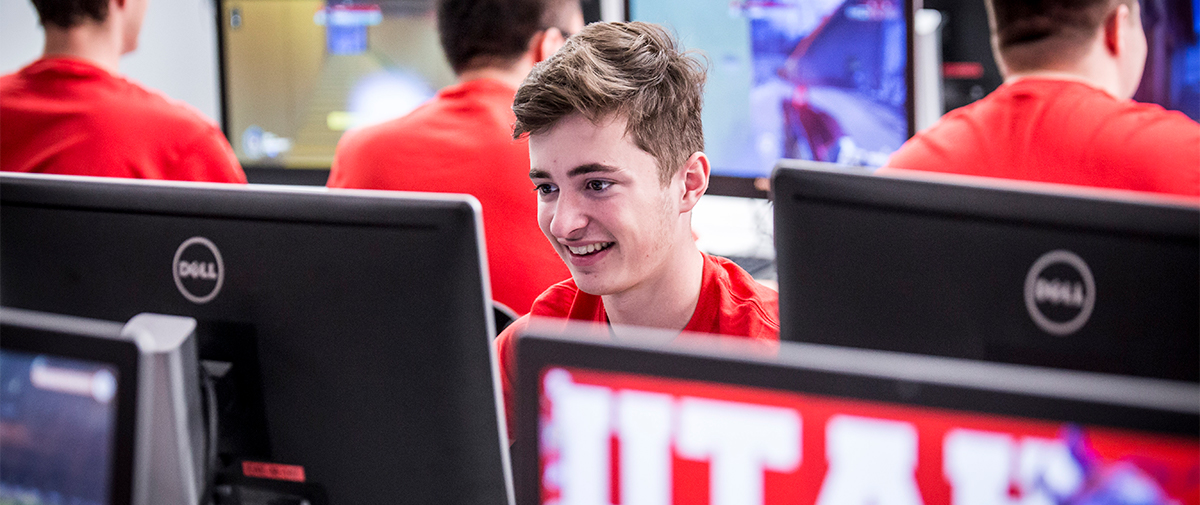You’re accessing archived content
This is archived content from the UIT website. Information may be outdated, and links may no longer function. Please contact stratcomm@it.utah.edu if you have any questions about archived content.
Student computing fees: how they're used and managed
These days, a lot of variables factor into how University of Utah tuition is calculated.
Residency, class year, and credit hours have an impact. Then there are class fees, including a Student Success Fee and 18 other mandatory fees, as well as potential program fees. Altogether, these line items can make the breakdown for tuition bills a bit overwhelming for any student or parent.
But they should never feel in the dark about how their money is used to further the educational experience.
When it comes to the Learning Spaces-Student Computing Fee (LS-SCF), the Teaching and Learning Portfolio (TLP) governance committee has implemented a thorough process for gathering data and reviewing requests for Learning Spaces funding.
Here’s how it’s calculated, vetted, and distributed.
What is the Learning Spaces-Student Computing Fee?
The Learning Spaces-Student Computing Fee is a mandatory charge included in tuition. Students pay $26.35 for the first credit hour on a sliding scale that maxes out at $119.45 for 15 or more credit hours per semester.
What does the fee support?
The computing fee supports technology needs for students across campus, including:
- Computing equipment, wired and wireless networks, and software
- Communication and collaboration tools
- Classrooms, computer labs, and student study spaces
The money generated by the fee pays only for student-related technologies and associated services; none is used for salaries, hourly wages, or faculty or administrative purposes.
Most of the funds collected are distributed to individual colleges and campus libraries that have submitted proposals. They also support central services provided by UIT and electronic upgrades to general-use learning spaces.
For fiscal year 2020, about $3 million was distributed to colleges, libraries, centers, and other university organizations. Twenty-four proposals with 129 projects and hundreds of line items (products and services) were vetted and awarded.
Who determines how the funds from the fee are distributed?
TLP reviews proposals each spring and makes award recommendations for how the funds should be distributed. As an IT governance committee, TLP consists of faculty and administrators from various departments and colleges (including Health Sciences), as well as student representation from Associated Students of the University of Utah (ASUU). TLP’s decisions are forwarded to the Campus Budget Advisory Committee for final review and approval.
How does the review process work?
Interested organizations submit proposals, typically in mid-January. Then a task force, composed of campus IT professionals and appointed by TLP, interviews applicants to verify their funding requests and makes recommendations on product selections and best pricing.
TLP then deliberates, judging projects on their merits and their ability to directly enhance the teaching and learning experiences of students. The award process typically concludes in mid-March.
What role does the Student Computer Lab Usage initiative play in deliberations?
The Student Computer Lab Usage (SCLU) initiative collects usage profiles on student computer labs across campus to determine their purpose, type of computing environment, and type of devices.

U student computer labs support about 3,000 computers.

About half of the labs are designated for class instruction.
If a lab submits a Learning Spaces funding request through its parent college, it must provide SCLU statistics — collected each fall and reported in January — as supporting documentation in its application. About 73 percent of reporting labs now use the LabStats tracking tool funded by Learning Spaces on behalf of all colleges and libraries, ensuring uniform data from participants.
During fall semester 2018, 20 organizations reported SCLU data for 121 labs and computing environments (physical labs and virtual software distribution).
According to the data, the labs support about 3,000 computers — 82 percent of which are desktop machines, 12 percent are thin clients, and 4 percent are laptops. More organizations, however, indicated that they are interested in distributing their software through virtual computing, where students access software through a central server while using their personal computer or mobile device.
The report also found that 58 labs marked class instruction as their primary purpose. Meanwhile, 30 labs listed open access for any university student as their primary purpose, and 23 noted restricted access for specific students using specialized software or instrumentation as their primary purpose.
Learning Spaces-funded projects
Some of the technologies and services funded by Learning Spaces-Student Computing Fees include:
- Accessibility and accommodation technologies, such as the Livescribe notetaking Smartpens
- Large format plotters, 3-D printers, standard printers, and book scanners
- Classroom audiovisual technology installation and upgrades, including traditional lecture rooms, as well as group-based student collaborative learning environments
- Student-used software, from standard productivity suites to video and audio production and editing, as well as specialized tools for the social sciences, architecture, science, and engineering
- Virtual desktop infrastructure (VDI), the technology for providing and managing virtual desktops
- Computer replacements for physical student labs, as well as laptops for student checkout or as part of roving, portable computer labs
- Crocker Science Center student labs and study workstations
- Charging stations for student mobile devices.
- Maintenance, support, and service agreements on a wide-range of hardware and computing devices
- VR and augmented reality studios
- Medical simulators
Teaching and Learning Portfolio
The Teaching and Learning Portfolio (TLP) focuses on technology to support teaching and learning across campus. This portfolio has primary responsibility for the learning management system, classroom technology, teaching and collaboration tools, and other teaching and learning technology tools. This portfolio will prioritize projects, identify initiatives, and allocate seed money to innovative technology projects that support teaching and learning at the University.
Node 4
Our monthly newsletter includes news from UIT and other campus/ University of Utah Health IT organizations, features about UIT employees, IT governance news, and various announcements and updates.

